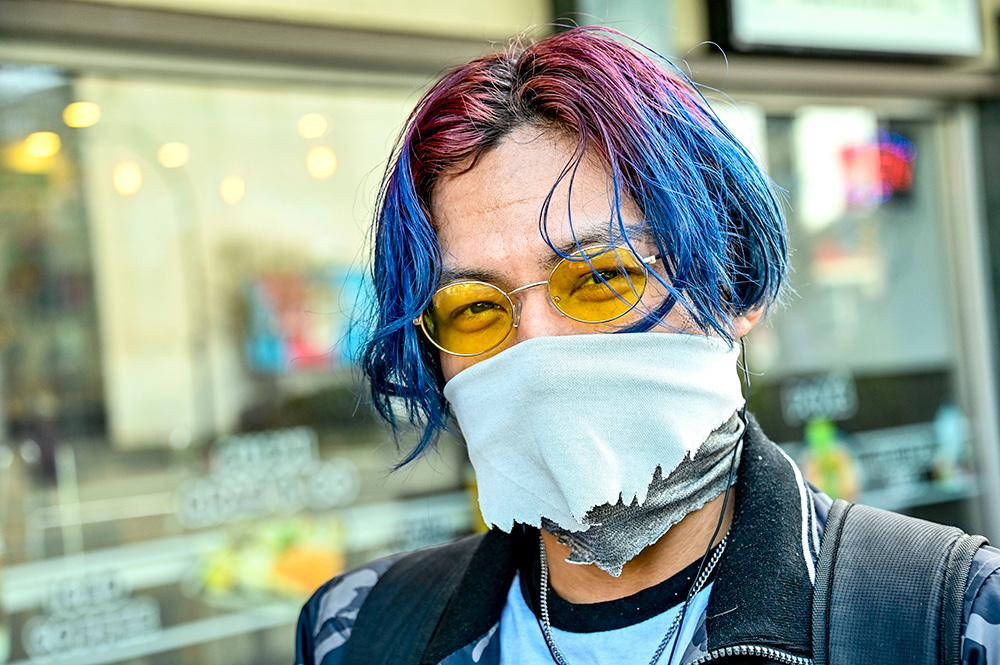Compiled by veteran medical journalist Brian Owens, this roundup of some of the newest science on the COVID-19 pandemic, straight from the scientific journals, is presented on Tuesdays and Fridays by Hakai Magazine in partnership with The Tyee.
Use two materials for homemade face masks
A combination of two different fabrics in a homemade face mask — such as cotton and silk, or cotton and chiffon — can effectively filter aerosol particles so long as the fit of the mask is good. Tightly woven fabrics like cotton can act as a mechanical barrier, while those that can hold a static charge, such as chiffon or silk, can provide an electrostatic barrier that traps smaller particles.
Designing a potential treatment
Researchers in China have designed and synthesized two molecules that specifically target the main protease of SARS-CoV-2, a viral protein important for the virus’s life cycle. Both compounds, called 11a and 11b, showed good antiviral activity in the test tube, but 11a is particularly promising because it had lower toxicity in animal studies.
COVID-19 is unlikely to be sexually transmitted
COVID-19 is unlikely to be spread through semen, according to a study of Chinese men who recently had the disease. No evidence of the virus that causes COVID-19 was found in their semen or testes. But intimate contact can still increase the risk of spreading the disease, through coughing, sneezing and kissing.
Fertility and Sterility, April 22, 2020
Frontline staff in the United Kingdom not at higher risk of infection than other health-care workers
In the United Kingdom, rates of infection are no higher among health-care workers in direct contact with COVID-19 patients than for those in non-clinical roles. The researchers concluded that current isolation protocols and personal protective equipment appear sufficient to prevent hospital transmission.
When infected, most children have mild symptoms
Most children with COVID-19 have only mild symptoms, or none at all, according to a review of several studies of pediatric infections. Children rarely required intensive care, and generally recover within one to two weeks.
JAMA Pediatrics, April 22, 2020
Virus targets specific cells in the nose and lungs, and hijacks immune system
Two studies have found that two types of cell — one in the nose, called nasal goblet cells, and one in the lungs, type II pneumocytes — are particular targets for SARS-CoV-2, the virus that causes COVID-19. These cells produce large amounts of angiotensin-converting enzyme 2, the surface receptor the virus uses to enter cells. Nasal goblet cells produce mucus in the nasal passages, and type II pneumocytes keep the air sacs in the lungs open. Researchers also found certain cells in the intestine have a lot of ACE2, which could explain why some patients experience gastrointestinal symptoms.
One of the studies also found that production of ACE2 is stimulated by interferon, a compound released by the body’s immune system to fight infections, indicating that the virus may have evolved to take advantage of some of our own immune defences.
Nature Medicine, April 23, 2020

No danger from heart drugs
A study of COVID-19 patients with high blood pressure has found no difference in disease severity, complications or risk of death if patients taking common heart medications, such as angiotensin-converting enzyme inhibitors or angiotensin receptor blockers. Earlier there was some concern these drugs could boost production of the ACE2, the receptor the virus uses to enter cells, thus increasing the risk of infection for people using them.
JAMA Cardiology, April 23, 2020
We could monitor COVID-19 using sewage
Researchers could study sewage to get a clearer picture of the number of COVID-19 infections in a city. Researchers used computer models to determine that the new method, called wastewater-based epidemiology, could potentially be a cheaper and faster way to supplement traditional testing and help keep track of the disease.
Science of the Total Environment, April 22, 2020
Heart problems seen in patients treated with hydroxychloroquine
A study of 84 patients with COVID-19 who were given the malaria drug hydroxychloroquine in combination with the antibiotic azithromycin found that they were at higher risk of heart problems. After taking the drugs, patients had a longer QTc interval, the time it takes for the heart to recharge between beats. A longer interval puts them at risk of arrhythmia and sudden cardiac death. An early stage clinical trial in Brazil also found that patients taking higher doses of chloroquine suffered more toxic effects and had longer QTc intervals than those on lower doses.
Nature Medicine, April 24, 2020
JAMA Network Open, April 24, 2020 ![]()
Read more: Health, Coronavirus, Science + Tech















Tyee Commenting Guidelines
Comments that violate guidelines risk being deleted, and violations may result in a temporary or permanent user ban. Maintain the spirit of good conversation to stay in the discussion.
*Please note The Tyee is not a forum for spreading misinformation about COVID-19, denying its existence or minimizing its risk to public health.
Do:
Do not: